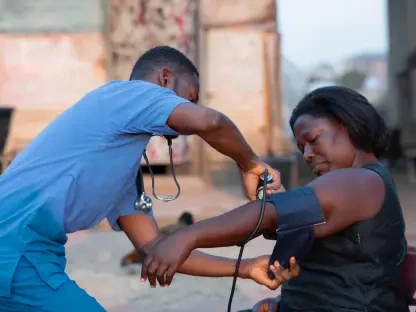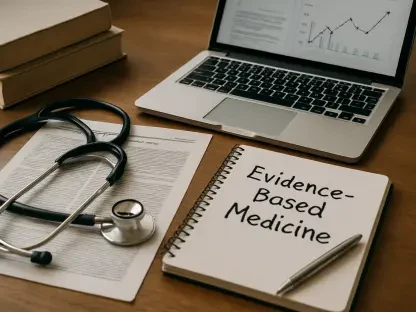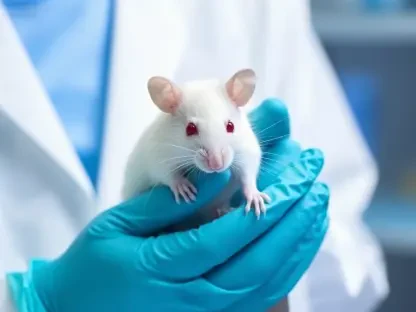Sexually transmitted infections (STIs) have been a persistent public health challenge for centuries, affecting millions of individuals annually. Despite advancements in medical treatment and preventive measures, the spread of STIs continues to pose significant health and financial burdens. This article explores the impact of STIs, their transmission pathways, common symptoms, and effective prevention strategies, providing a comprehensive guide to combating this ongoing issue. Both the social and healthcare landscapes are deeply affected by the persistence of STIs, and understanding these elements can help pave the way for better prevention and treatment outcomes.
The Impact of STIs
STIs represent a substantial burden on both individual and public health levels. Each year, approximately 20 million Americans contract an STI, with some developing severe, life-altering conditions like Human Immunodeficiency Virus (HIV). Over half of these infections occur in adolescents and young adults aged 15 to 24, highlighting a critical demographic at risk. In 2018 alone, around 1 in 5 Americans had an STI, leading to an estimated $16 billion in treatment-related costs. These figures reflect the immense financial strain on the healthcare system and the broader community. The societal impact of STIs extends beyond financial costs, affecting various facets of life and health.
Individuals affected by STIs often face social stigma, emotional distress, and potential complications that can affect their quality of life. Public health efforts must address these multifaceted challenges to reduce the prevalence and impact of STIs. Emotional and psychological support for affected individuals is key, and there needs to be a collective effort to combat the stigma associated with STIs. Efforts to provide education and create awareness about the realities and preventability of STIs can help in changing public perception and encouraging more proactive health behaviors.
Transmission Pathways
Understanding how STIs are transmitted is crucial in developing effective prevention strategies. Unlike more easily transmitted illnesses like the common cold, which spreads through body fluids from the mouth, nose, and colon, STIs are predominantly spread through sexual contact. This contact includes vaginal, anal, or oral intercourse, encompassing various combinations. The primary culprits include bacteria, parasites, and viruses, each presenting unique challenges. The most commonly transmitted STIs are Chlamydia, Genital herpes, Genital warts, Gonorrhea, Hepatitis B, Syphilis, Trichomoniasis, and HIV.
Moreover, several other infections, not strictly classified as STIs, such as hepatitis C, cytomegalovirus, scabies, and pubic lice, can also be transmitted sexually. Recognizing these transmission pathways is essential for implementing targeted prevention measures and reducing the spread of STIs. A nuanced understanding of these pathways enables healthcare providers and public health professionals to design more effective interventions and educate the public on behaviors that can minimize risk.
Recognizing Symptoms
The symptoms of STIs vary widely and can significantly impact a person’s quality of life. However, some infections may present no symptoms at all, making them harder to detect and treat promptly. When symptoms do occur, they may include abnormal discharge from the penis, rectum, or vagina, burning or discomfort during urination, discomfort in the abdomen or pelvis, strange odors from the genitals or groin, pain during sexual intercourse, unusual rashes with sudden onset, and unexplained fatigue or fever. These symptoms can often be mistaken for other conditions, leading to a delay in diagnosis and treatment.
Individuals experiencing any of these symptoms are encouraged to contact their primary care provider for further evaluation to prevent complications and transmission to others. Early detection and treatment are crucial in managing STIs and mitigating their impact on individuals and public health. Regular screenings and being informed about one’s own sexual health status can play a vital role in stopping the spread of these infections, ensuring timely intervention and treatment.
Medical Prevention
Prevention of STIs can begin at an early age, with adolescents as young as 9 to 12 years recommended to receive vaccines to prevent the Human Papillomavirus (HPV). Given the high prevalence of HPV, with 80% to 90% of the population encountering it during their lifetime, vaccination is a vital tool. The HPV vaccine can significantly reduce the risk of various life-threatening cancers caused by the virus. This proactive measure can offer long-term protection and significantly decrease the incidence of HPV-related diseases.
In addition to vaccination, open and honest communication about safe sexual practices is crucial. Educating young people on these topics helps them make informed decisions and adopt safer behaviors as they grow into adulthood. Several resources are available to guide parents or guardians in discussing puberty, pregnancy, and supporting LGBTQ+ youth. For adults, vaccination can still offer protection even if they have already been exposed to the virus. Individuals aged 27 to 45 who are unvaccinated should discuss HPV vaccination with their primary care physician as it may still provide benefits against other strains of the virus. Another significant medical prevention strategy includes the use of pre-exposure prophylaxis (PrEP) for HIV-negative individuals at increased risk of acquiring the infection through sex or injection drug use.
Behavioral Prevention
Behavioral changes play a crucial role in reducing STI transmission. Routine screening is essential, with general recommendations for annual screenings for sexually active individuals and testing between new sexual partners. Specific guidance can be obtained from healthcare providers. Effective communication about safer sex practices is also vital for preventing transmission. Honest discussions before engaging with new partners can establish trust and ensure mutual protection.
Consistent use of barrier protection, such as condoms and dental dams, during sexual activity significantly reduces the risk of STI transmission. Reminding oneself and partners to use these protective methods during every encounter is essential. Additionally, avoiding excessive alcohol or illicit drug use is vital as these can impair judgment and increase the likelihood of engaging in unprotected sex, raising the risk of contracting STIs. These behavioral strategies, when combined with medical interventions, can create a robust approach to STI prevention.
Access to Resources
Sexually transmitted infections (STIs) have been a persistent public health challenge for centuries, affecting millions of people every year. Despite the progress in medical treatments and preventive measures, the spread of STIs still imposes substantial health and financial burdens. This article delves into the impact of STIs, their transmission pathways, common symptoms, and effective prevention strategies. It aims to provide a well-rounded guide to tackling this ongoing issue. STIs affect both social and healthcare landscapes profoundly, and understanding these dynamics is crucial for improving prevention and treatment outcomes. Within this context, factors such as public education, accessible healthcare, and regular screenings can play pivotal roles. Moreover, individual responsibility, including practicing safe sex and informing partners, is integral. By fostering a better grasp of how STIs affect our society and implementing comprehensive measures, we can move towards controlling their spread and alleviating their impact on public health.









